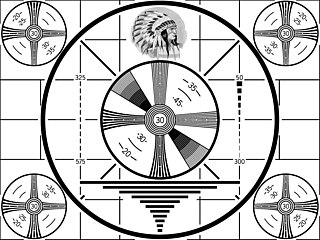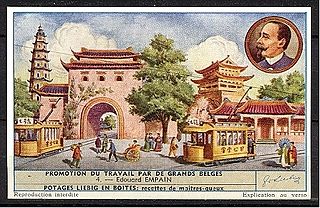Associated Electrical Industries (AEI) was a British holding company formed in 1928 through the merger of the British Thomson-Houston Company (BTH) and Metropolitan-Vickers electrical engineering companies. In 1967 AEI was acquired by GEC, to create the UK's largest industrial group. A scandal that followed the acquisition is said to have been instrumental in reforming accounting practices in the UK.
The Phoebus cartel was an international cartel that controlled the manufacture and sale of incandescent light bulbs in much of Europe and North America between 1925–1939. The cartel took over market territories and lowered the useful life of such bulbs. Corporations based in Europe and the United States, including Osram, General Electric, Associated Electrical Industries, and Philips, incorporated the cartel on January 15, 1925 in Geneva, as Phœbus S.A. Compagnie Industrielle pour le Développement de l'Éclairage. Although the group had intended the cartel to last for thirty years, it ceased operations in 1939 with the outbreak of World War II. Following its dissolution, light bulbs continued to be sold at the 1,000-hour life standardized by the cartel.

A monoscope was a special form of video camera tube which displayed a single still video image. The image was built into the tube, hence the name. The tube resembled a small cathode ray tube (CRT). Monoscopes were used beginning in the 1950s to generate TV test patterns and station logos. This type of test card generation system was technologically obsolete by the 1980s.

Mazda was a trademarked name registered by General Electric (GE) in 1909 for incandescent light bulbs. The name was used from 1909 to 1945 in the United States by GE and Westinghouse. Mazda brand light bulbs were made for decades after 1945 outside the US. The company chose the name due to its association with Ahura Mazda, the transcendental and universal God of Zoroastrianism whose name means light of wisdom in the Avestan language.
Veolia Environnement S.A., branded as Veolia, is a French transnational company with activities in three main service and utility areas traditionally managed by public authorities – water management, waste management and energy services. It previously also managed transport services through its subsidiary Veolia Transport until January 2019. In 2022, Veolia employed 220,000 employees in 58 countries. Its revenue in that year was recorded at €42,885 million. It is quoted on Euronext Paris. It is headquartered in Aubervilliers.
In Europe, the principal method of numbering vacuum tubes was the nomenclature used by the Philips company and its subsidiaries Mullard in the UK, Valvo(de, it) in Germany, Radiotechnique (Miniwatt-Dario brand) in France, and Amperex in the United States, from 1934 on. Adhering manufacturers include AEG (de), CdL (1921, French Mazda brand), CIFTE (fr, Mazda-Belvu brand), EdiSwan (British Mazda brand), Lorenz (de), MBLE(fr, nl), RCA (us), RFT(de, sv) (de), Siemens (de), Telefunken (de), Tesla (cz), Toshiba (ja), Tungsram (hu), and Unitra. This system allocated meaningful codes to tubes based on their function and became the starting point for the Pro Electron naming scheme for active devices.

Alcatel–Lucent S.A. was a multinational telecommunications equipment company, headquartered in Boulogne-Billancourt, France. It was formed in 2006 by the merger of France-based Alcatel and U.S.-based Lucent, the latter being a successor of AT&T's Western Electric and a holding company of Bell Labs.

SA Ateliers de Constructions Electriques de Charleroi (ACEC) was a Belgian manufacturer of electrical generation, transmission, transport, lighting and industrial equipment, with origins dating to the late 19th century as a successor to the Société Électricité et Hydraulique founded by Julien Dulait.

Piscop is a commune in the Val-d'Oise department in Île-de-France in northern France.
The Compagnie générale française des transports et entreprises, commonly known by the initialism CGFTE, was a company which managed public transportation networks in several French cities, including Bordeaux (TBC), Nancy, Rouen (TCAR) and Chambéry (Stac). It was formed in 1953 from Compagnie Générale Française de Tramways (CGFT), which was created in 1875.

GE Canada is the wholly-owned Canadian unit of General Electric, manufacturing various consumer and industrial electrical products all over Canada.
Jérémie Carboni is a French film producer, director, advisor and entrepreneur.

The Conférence des Grandes Écoles (CGE), French for "Conference of Grandes Écoles", is a French national institution, created in 1973. It mainly acts as an association of Grandes Écoles, providing representation, research and accreditation. A Grande école is a French institution of higher education that is separate from, but parallel and often connected to, the main framework of the French public university system.

Nexity is a French company that focuses on real estate development and the provision of related services. The company was founded in 2000 in Paris.

The Edison and Swan Electric Light Company Limited was a manufacturer of incandescent lamp bulbs and other electrical goods. It was formed in 1883 with the name Edison & Swan United Electric Light Company with the merger of the Swan United Electric Company and the Edison Electric Light Company.

Radiotechnique (RT) was a French electronics company that made radio transmitting and receiving vacuum tubes, and later more advanced components such as integrated circuits and solar panels. At first it was a subsidiary of the French Compagnie générale de la télégraphie sans fil (CSF). Later it became a subsidiary of Philips of the Netherlands. The company expanded after World War II, moving into television and electronics, including photovoltaics and printed circuits, and in 1979 had about 15,000 employees. Later it lost market share, went through various restructurings, was sold in 1998 and went bankrupt in 2002.

The TM was a triode vacuum tube for amplification and demodulation of radio signals, manufactured in France from November 1915 to around 1935. The TM, developed for the French Army, became the standard small-signal radio tube of the Allies of World War I, and the first truly mass-produced vacuum tube. Wartime production in France is estimated at no less than 1.1 million units. Copies and derivatives of the TM were mass-produced in the United Kingdom as Type R, in the Netherlands as Type E, in the United States and in Soviet Russia as P-5 and П7.

The Empain group was a loose grouping of companies founded by Édouard Empain (1852–1929) of Belgium and controlled by the Empain family. From 1881 until merging with Schneider & Cie in 1969, the companies engaged in a broad range of activities including tramways, railways, electricity generation, construction and mining. The main areas of activity were Belgium and France, but the group also pursued opportunities in Russia, Egypt, China and elsewhere, and played a large role in the development of the eastern Belgian Congo.
The 455-line standard, also known as 450-line, was a French black-and-white analog television broadcasting norm employed between 1937 and 1939. It was later replaced by the 441-line format, which remained in use until 1956.














